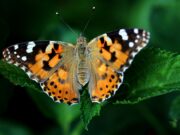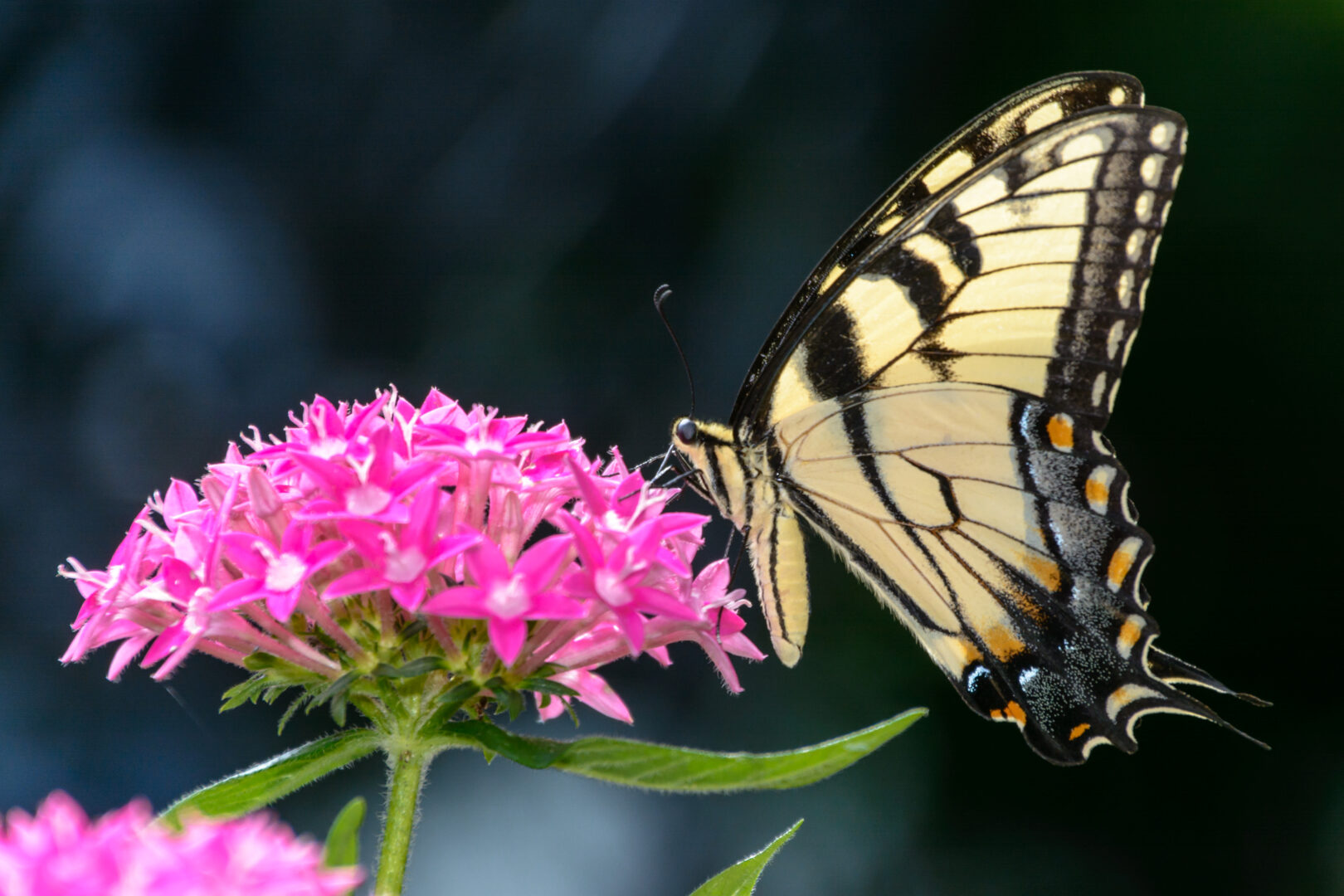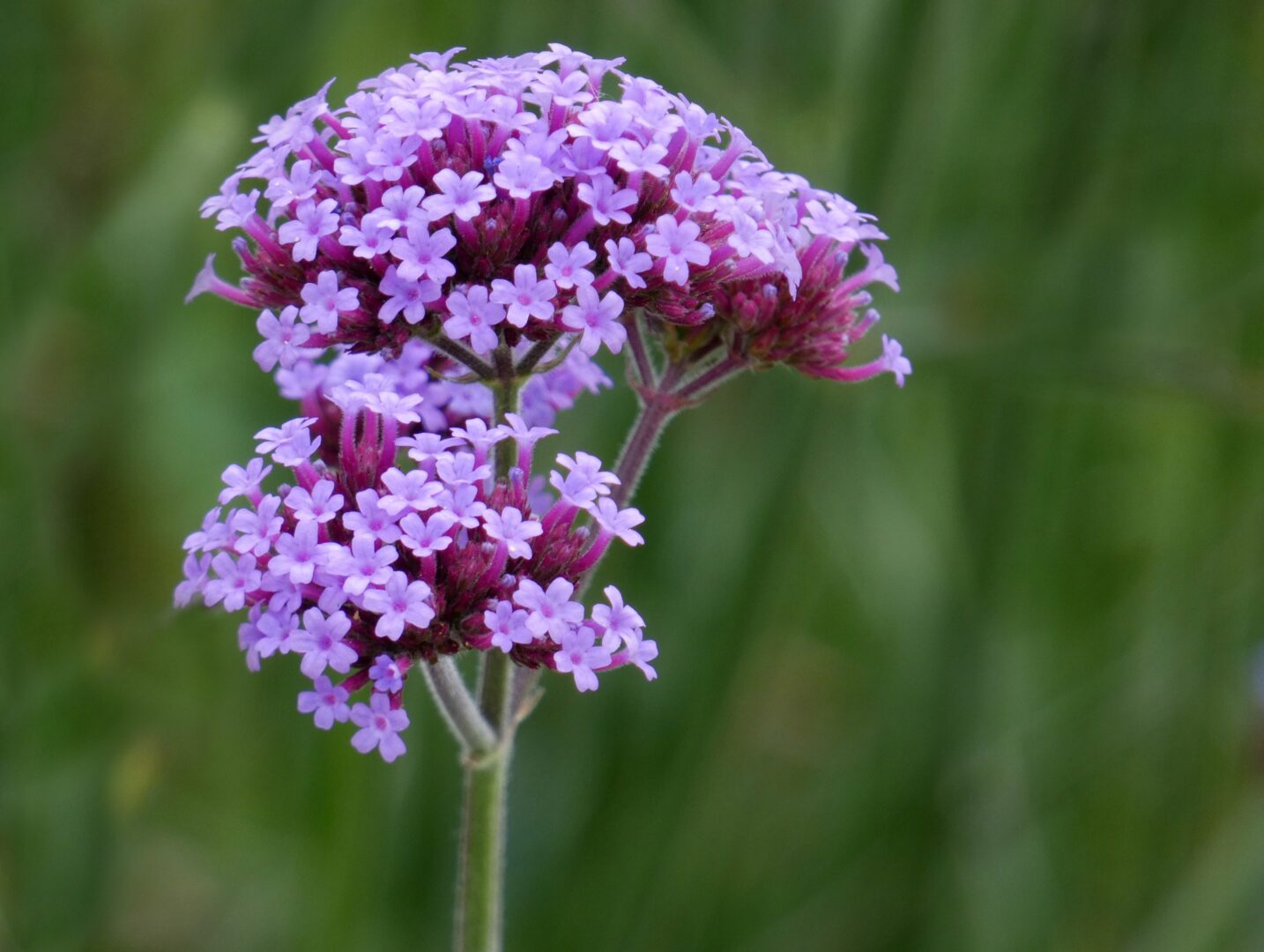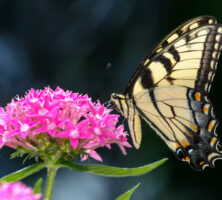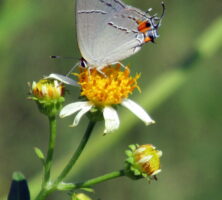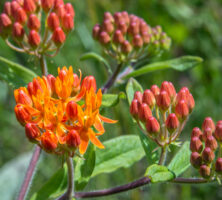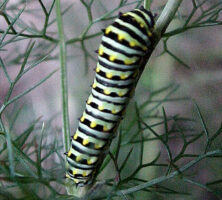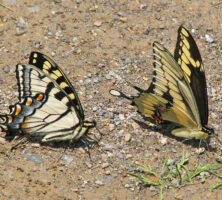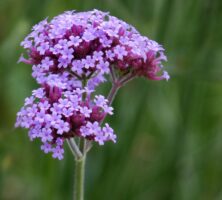Butterflies and moths are insects grouped into a family called Lepidoptera. There are several hundred butterfly species and more than 1,000 moth species in Georgia. Many species are native, but quite a few migrate annually or become visitors to the state during the summer months. Butterflies and moths are second only to bees and wasps as the pollinators of flowers in Georgia. Their greatest importance is to the native flowers and trees, as many of the state’s native plants rely on the butterflies and moths, rather than on bees, for pollination. Thus the butterfly may help to preserve endangered wildflowers.
Differences between Butterflies and Moths
Some general rules aid in determining butterfly from moth species. Butterflies are diurnal, meaning that they are usually seen during the daylight hours. Moths are primarily nocturnal creatures, although there are a few day-flying moths. It is not surprising, then, that most butterflies are brightly colored and easily seen by potential mates and predators in the sunshine. Moths, on the other hand, are dark and dull, relying on chemical scents to locate mates and avoid predators. There are twice as many moths flying at night as there are butterflies during the day. May and June, during a full moon and between dusk and midnight, are the best times for observing night-flying insects.
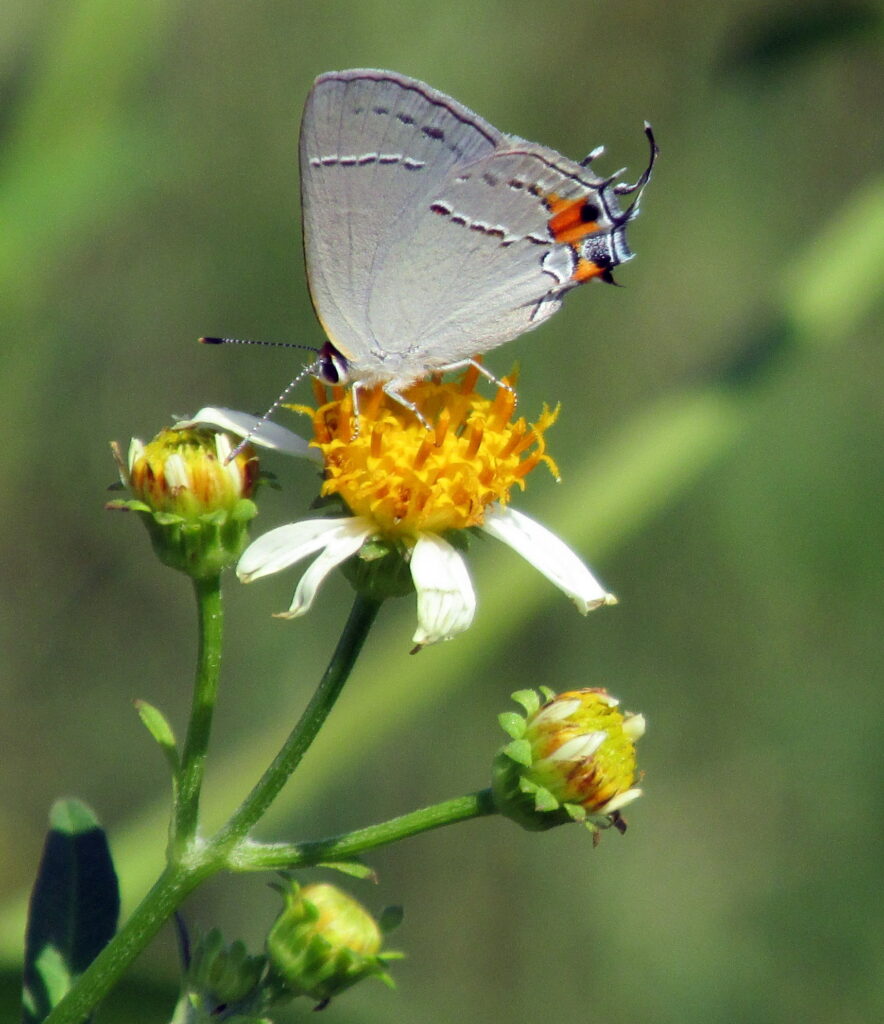
Butterfly bodies are usually slim, whereas moth bodies can be husky and fuzzy. Moths hold their wings outstretched when they rest, whereas butterflies hold their wings upright, or vertically, when they rest. Another difference is in their antennae. Moths and butterflies use these antennae to detect chemicals in the air that signal the presence of the opposite sex. Moth antennae are feathery and extensive, as they have poor eyesight and rely heavily on chemical signals at night. Butterflies have knobby ends on their antennae stalks and use flight pattern and shape as additional aids in locating mates.
Several larvae (called caterpillars) of moths have stinging spines, and several species, including the common cabbage butterfly, are not native and multiply rapidly each year. These invasive caterpillars can do millions of dollars of damage to vegetable crops.
Preferred Habitat
In general butterflies and moths congregate in areas that feature their basic necessities. The list includes a food source for the young caterpillars, a nectar source for adult butterflies (few moths eat when mature), and shelter. Butterflies also congregate near water sources, such as muddy stream banks or depressions in the ground. Some species prefer the cover of trees and shrubs, whereas others, especially butterflies, require wide open spaces with tree cover nearby.
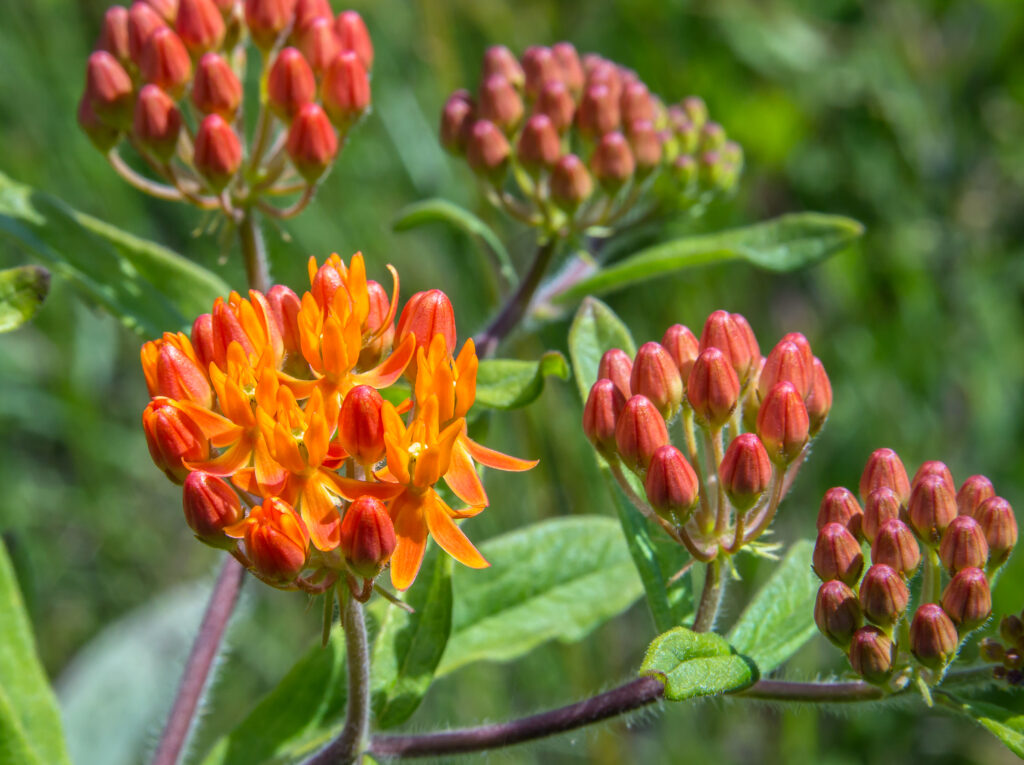
Many species of butterflies and moths overwinter in Georgia. They emerge on warm winter days and return to their shelters when the cold returns at night. These shelters can be rock outcroppings, fallen trees, tree bark, eaves of houses, barns, and even warm compost piles. Overwintering sites must have some warmth to keep the butterfly or moth from freezing. Butterfly boxes are not suitable for overwintering, but they do well as places for butterflies to hide during thunderstorms. Both butterflies and moths quickly find niches under tree bark, large branches, or overhangs of rocks when storms approach.
Life Cycle
Caterpillars usually eat the leaves of only a few species of plants, and they eat only what plants their mother laid eggs upon. Non-native caterpillars, such as the cabbage butterfly, will eat literally dozens of garden plants, however. Caterpillars can eat their weight in food several times over each day. Monarch butterfly caterpillars can strip all the leaves off a butterfly weed plant (Asclepias tuberosa) in less than a week. A great deal of food energy is required to undergo the change from a caterpillar to a moth or butterfly.
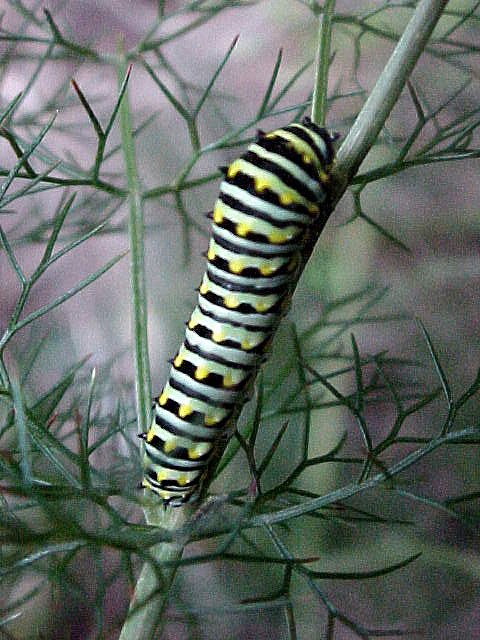
Butterflies and moths hatch from their chrysalises and find mates quickly because their lives are short and full of predatory dangers from birds, spiders, lizards, and frogs. Mating takes place within days, and the female soon after lays eggs on a plant species. The caterpillars hatch and focus on eating for two to four weeks. Once they have grown to a mature size, they undergo metamorphosis. Moth caterpillars begin the process by either spinning a cocoon made of silk and natural debris or finding a protected place under leaves or stones. Butterfly caterpillars prefer to begin their process by attaching themselves to sticks or large leaves. The caterpillar places silk on a branch, clamps onto it with its hind legs, and then weaves a strand of silk near the head to hold it upright. Once in place, moth and butterfly caterpillars split their skins starting at the head, revealing a pupae underneath. They can overwinter in this form or develop into moths or butterflies within a few weeks, depending on the season.
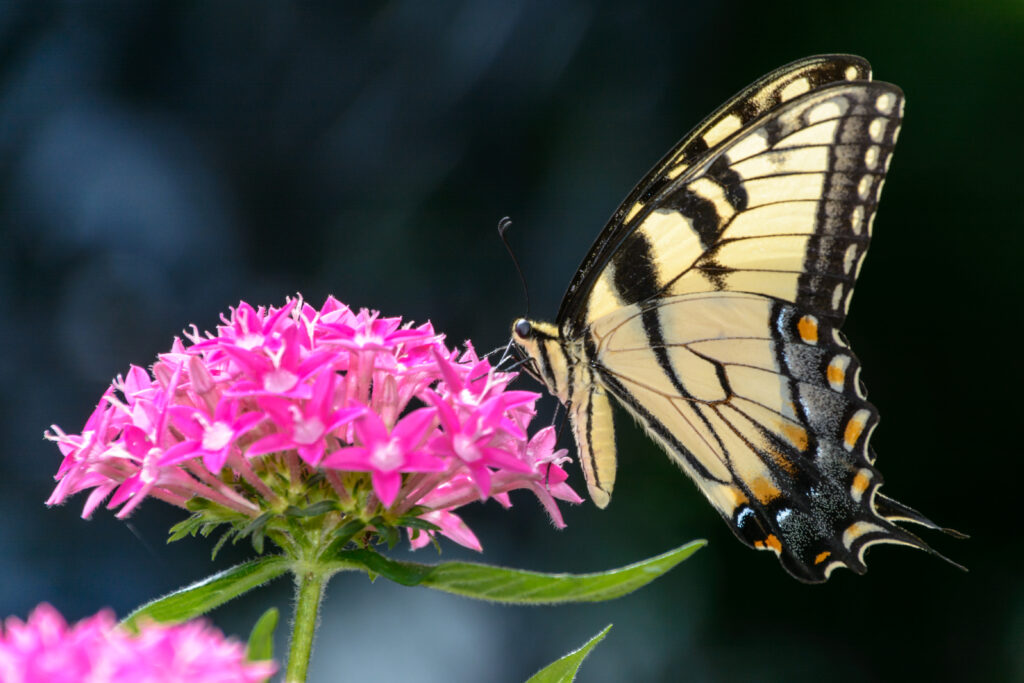
Once the process has been completed, and the moth pupae or butterfly chrysalis splits, the developed insect can leave. In the case of moths that form cocoons, the silk strands must be cut or dissolved before the insect can escape. Once out, the insect must pump the fluids from its abdomen into the wings to expand them and then allow them to dry and harden. The moth or butterfly then begins to fly and seek a mate.
Broods and Population Dynamics
Each species of moth and butterfly has a unique period of time within which it completes its life cycle. When a butterfly or moth species has a long specific breeding time, large numbers of adults appear several weeks later. Annual breeding cycles vary from species to species and range from two to seven cycles in one year. For example, the tiger swallowtail ( Papilio glaucus), Georgia’s state butterfly, has two “broods” of caterpillars, or two breeding cycles. The first occurs in May, and the second, a much larger brood, in July and August.
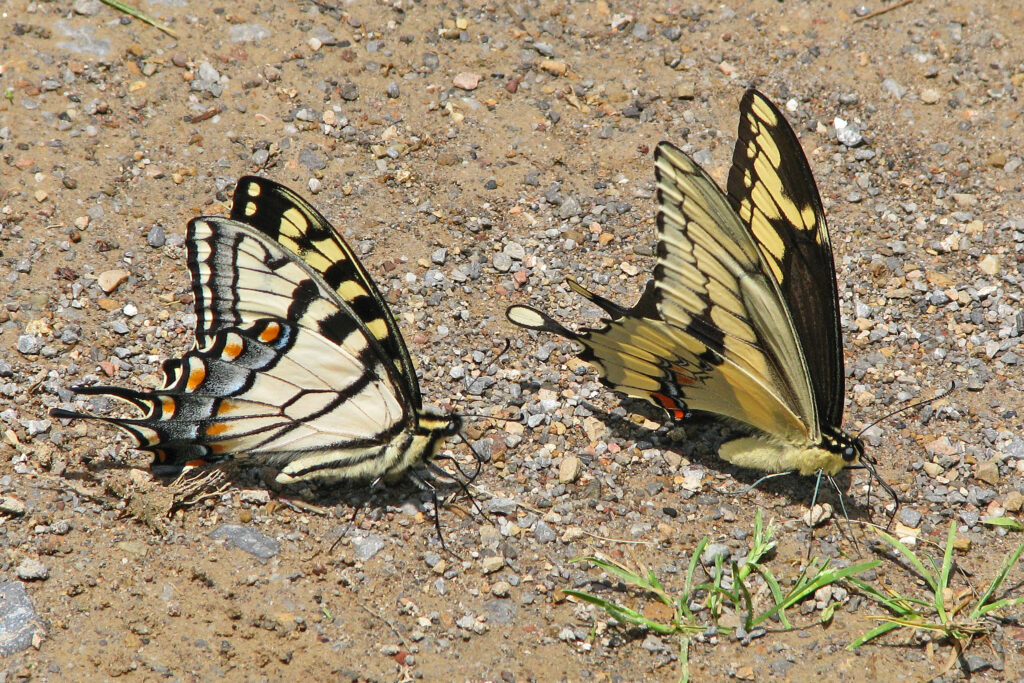
Another factor is the “range,” or area of land, that the species occupies. Some of Georgia’s butterflies and moths live only in the northern mountain valleys, and others live close to the coastal marshes. The species may be limited to certain areas by the presence of native food plants for the caterpillars or by environmental conditions needed by the insect to live comfortably. By knowing where each species lives, what food plants live there, and how far the insects travel, scientists can better understand their behavior and how the insects fit into the environment.
This information also allows scientists and butterfly enthusiasts to look for rare species at the right time of year or to monitor overall populations of these insects in a given area. Gardeners, who can attract species by growing plants that produce nectar or food for the butterflies, also benefit from this knowledge.
Migrating Species
Some butterflies actually migrate to other parts of the Americas each year to avoid very cold temperatures. Butterflies such as the painted lady (Vanessa cardui), the red admiral (Vanessa atalanta), and the Ohio buckeye (Junonia coenia) do migrate to warmer climates each year. The best documented case is that of the monarch (Danaus plexippus). No one monarch completes the journey; rather, it may take three to five generations to complete the yearly migration pattern of more than 2,000 miles. Monarchs overwinter by clustering together on specific species of trees in the Oyamel forests in central Mexico for warmth and protection. In spring they leave as a group in time to arrive in the United States, just when conditions are ideal in the southeastern United States and Texas for young monarch caterpillars to feed on newly emerging stems of Asclepias. These adults arrive in Georgia near the middle of May.
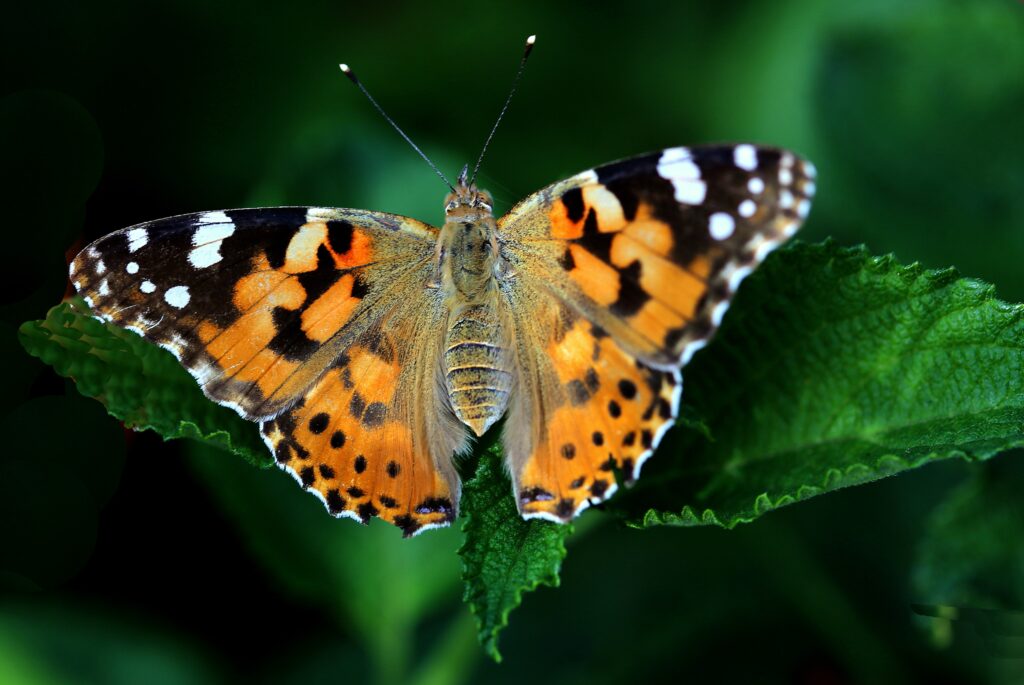
The eggs are laid, and the new caterpillars develop into adult monarchs within a five- week period. These adults then fly northward to such places as Minnesota, Pennsylvania, and southern Canada, where by that time a different species of Asclepias is just at the perfect stage for the caterpillars to eat. This generation matures, and by September the newly emerged adults begin their southward movement back to Mexico. They pass through Georgia again in September and October. Monarchs that live east of the Rocky Mountains generally migrate to Mexico. Those that live west of the Rockies migrate to the California coast near Monterey.
Environmental Issues
Butterflies and moths face many challenges to stay alive. The most significant challenge is habitat loss through farming. As crop production increases and herbicides are more frequently used, the plowing and spraying kills the native plants that the insects feed upon. Another factor is roadside spraying. Again, herbicides destroy important forage plants, including Asclepias, thus reducing the available food for the caterpillars.
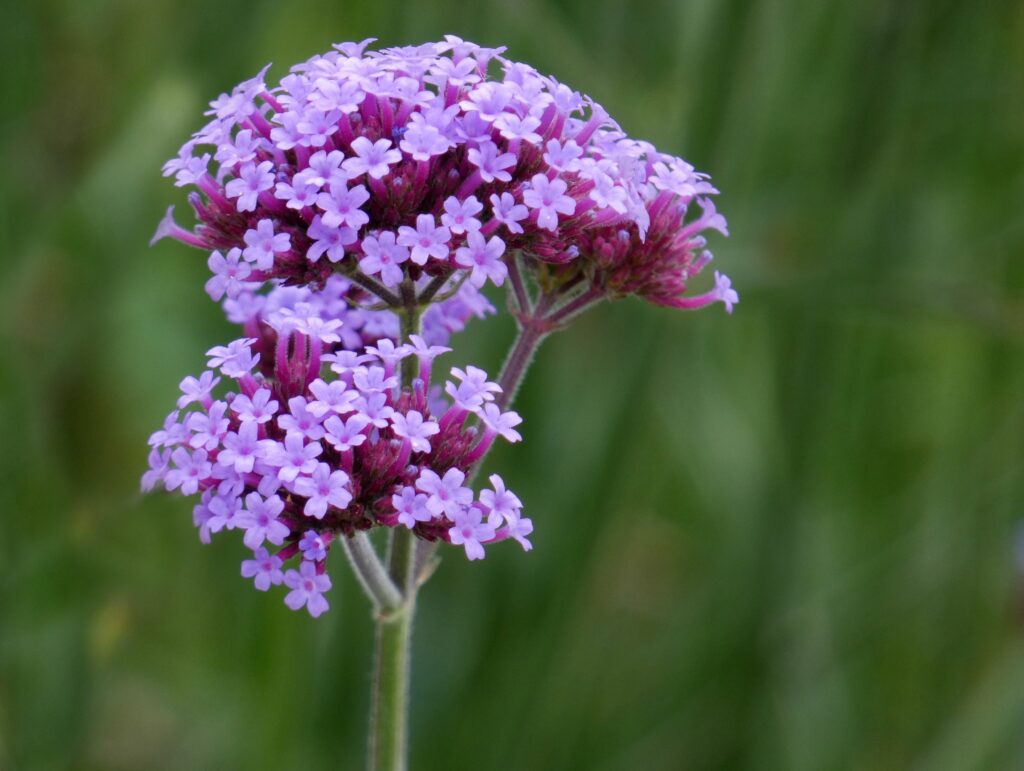
The top plants for attracting butterflies and moths to Georgia gardens are butterfly bush (Buddleia davidii), butterfly weed (Asclepias tuberosa), hardy lantana (Lantana camara), honey bush (Melianthus major), hummingbird sage (Salvia guaranitica), Mexican sunflower (Tithonia rotundifolia), passion vine (Passiflora), pineapple sage (Salvia elegans), purple cone flower (Echinaceae purpurea), southern lilac (Vitex), upright verbena (Verbena bonairiensis), and wild ageratum (Eupatorium coelestinum).


